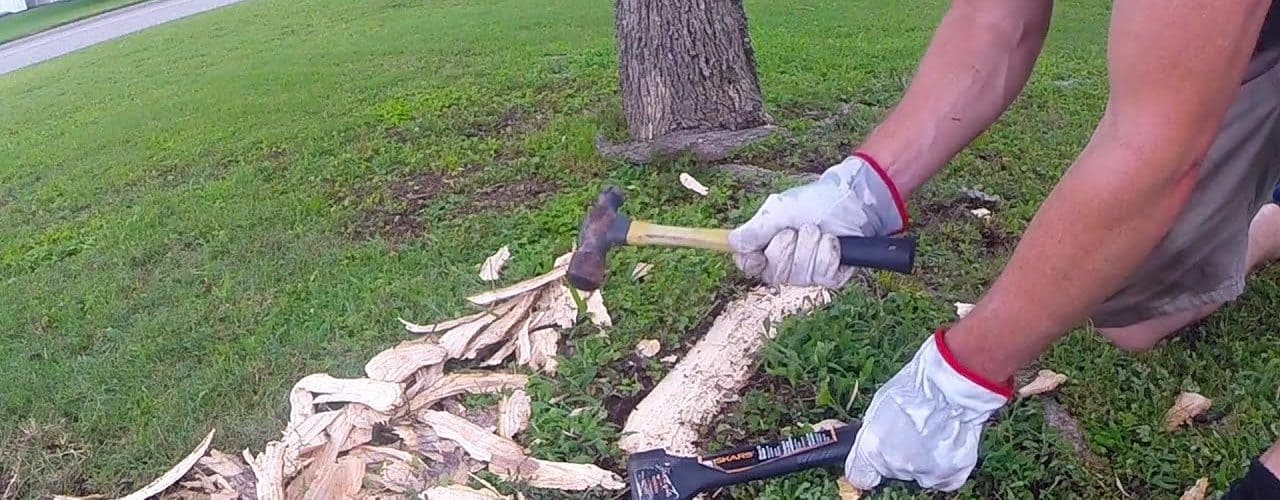For whatever reason, you might find it necessary to remove or cut back the roots from a tree in your yard. If this is not done carefully, it can cause permanent damage to the tree, and it will die. Obviously, if you’re talking about removing the roots from a dead tree stump, then this is a non-issue. But if the roots are a tripping hazard for your or your children, or the roots are beginning to affect the sidewalk in front of your house or the foundation of your house, you will want to remove these roots with as little harm to the tree as possible. The best time of year for tackling a project like this is early June or early July, unless you live in the tropics, in which case you can do this at any time throughout the year.
The first step is to measure the circumference of the tree trunk. Start midsection, and use a measuring cloth. Multiply this measurement by twelve. For instance, if the circumference of the tree measures eleven feet around, multiply eleven by twelve. This will give you the total number of inches you need to be away from the tree when cutting so as not to harm the tree. Measure this distance out from one side of the tree and drive a spike into the root. Drive it deep, all the way in if possible, and begin cutting. Go this distance around the tree using a handsaw or a chainsaw, taking care to shield your eyes. Keep the proper distance away from the tree. It is better to cut the smaller roots than the larger ones, because the larger roots will have smaller roots branching off from them. If you cut these large ones, you stand a greater chance of harming the tree.
There is an element of risk in cutting the roots, no matter what method you use. The roots are the primary long term resource for the tree to get its essential nutrients, and there is no surefire way to ensure the life and health of the tree without leaving the roots alone. Only you can assess the risk and decide for yourself if cutting away the roots of the tree is something that you need or want to do. In any case, consult a botanist or botany resource beforehand to get the statistics on your particular kind of tree, and what the long term effects on the tree might be if you follow through with this procedure. Obviously, if the foundation of your house is in danger, this will be something you need to do regardless of the outcome. If you are removing an old tree stump, the roots and stump can come out of the ground altogether without damaging the surrounding trees and plants, provided that the stump is a good distance away. After the roots have been removed, disposing them is up to you. You could try to use them for firewood, but burning them outside may violate city ordinances. Your local sanitation company may take them free of charge, but check with your local ordinance and zoning laws first. If the risk of killing or injuring the tree is too great, removing any of the roots is not recommended. To get the best results, always cut an even circle around the tree according to the measurements you took earlier. If you get too close and begin cutting, stop right away and continue following the proper measurements. Accordingly, when you cut the roots from your tree, take care not to harm the surrounding trees or tree roots if any others are nearby.







